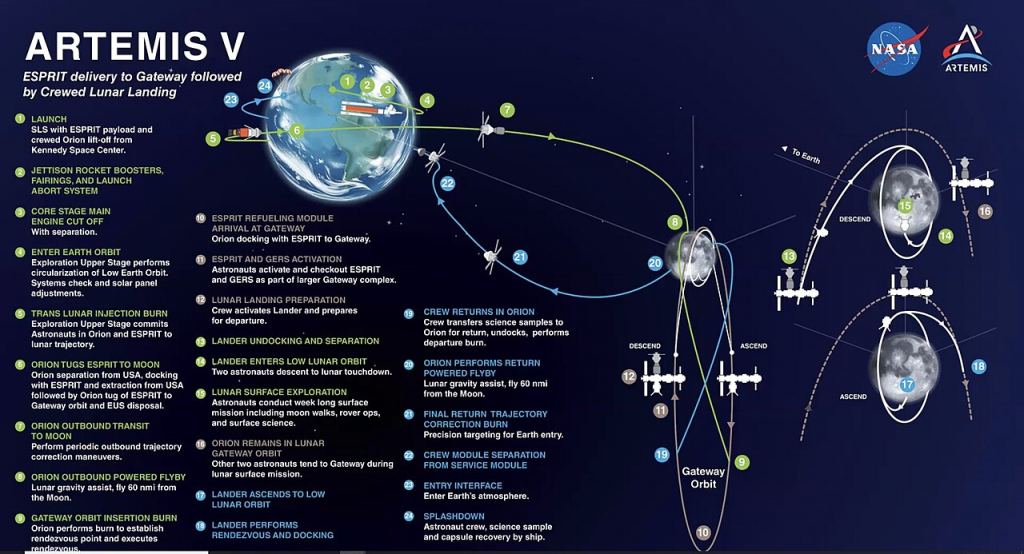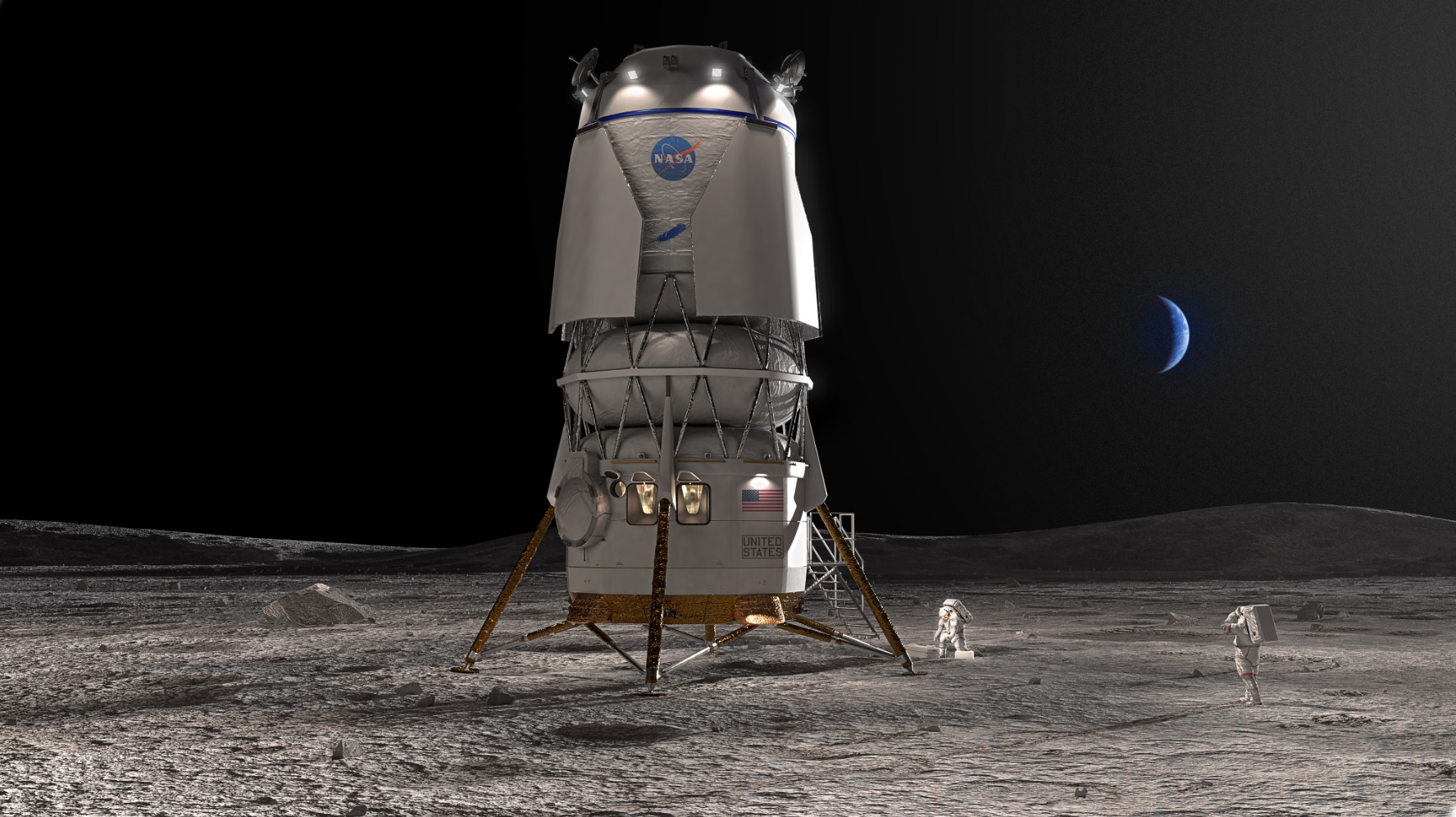NASA has announced a second lunar lander provider for its Artemis program, choosing Blue Origin’s National Team to deliver astronauts to the Moon’s south pole as early as 2029. Blue Origin’s lander will be part of the Artemis V mission. They join SpaceX, whose Starship is already slated to ferry astronauts to the lunar surface for Artemis III and IV.
“Having two distinct lunar lander designs, with different approaches to how they meet NASA’s mission needs, provides more robustness and ensures a regular cadence of Moon landings,” said Lisa Watson-Morgan, Human Landing System Program Manager at NASA’s Marshall Space Flight Center.
Blue Origin isn’t working alone on their new lander, dubbed ‘Blue Moon’. It includes contributions from Lockheed Martin, Draper, Boeing, Astrobotic, and Honeybee Robotics.
They beat out competitor Dynetics for the contract. Dynetics was partnered with Northrop Grumman, who built the lunar lander for the Apollo missions in the 1960s and 70s.
NASA official James Free explained that while Dynetics’ proposal offered some advantages, including flexibility and a ‘low-slung architecture’ that “presents safety and operational benefits for deploying (or loading) cargo,” it also failed to meet some of NASA’s requirements for accommodating specific cargo and extravehicular activity suits. Free was also concerned that key testing of critical technology would occur only nine months before a crewed demonstration, increasing the likelihood of delays.
Blue Origin’s proposal included more testing much earlier, including so-called ‘pathfinder’ missions in 2024 and 2025 to check out key technologies. There were some concerns with Blue Origin’s proposal: weaknesses include their proposed communications system, and problems with the company’s schedule management. But these problems were outweighed by the lander’s overall capabilities, which exceeded NASA’s requirements in some areas. This includes the possibility of a non-polar Moon mission in the future.
Blue Origin has given its lander a significant makeover since it revealed Blue Moon’s first iteration back in May 2019. Blue Moon now stands sixteen meters tall, and is designed to fit inside the fairing of Blue Origin’s upcoming New Glenn rocket. Unfuelled, it weighs in at 16 metric tons, and 45 metric tons when fully loaded. The crew capsule sits at the bottom of the vehicle, beneath the two large fuel tanks above, making for easier access to the lunar surface. A separate, uncrewed vehicle will refuel the lander in space.
Blue Origin says that the lander’s liquid oxygen-liquid hydrogen fuel system offers “a dramatic advantage for high-energy deep space missions,” but these fuels must be stored cryogenically, making them difficult to work with. Part of Blue Origin’s technology development for the lander will involve designing better methods of keeping liquid hydrogen storable for longer.

The Artemis V mission will see four astronauts carried to the planned Lunar Gateway station in lunar orbit by NASA’s SLS rocket. Two of those astronauts will then transfer to Blue Origin’s lander and descend to the surface. They will spend a week at the Moon’s south pole, conducting experiments and exploration activities.
After Artemis V, SpaceX and Blue Origin will be able to compete for new mission contracts, similar to the way that space companies currently compete for cargo delivery missions to the International Space Station.
Learn More:
NASA Selects Blue Origin as Second Artemis Lunar Lander Provider. NASA, May 19th, 2023
Featured Image: Artist’s rendering of the Blue Moon Lander. Credit: Blue Origin.

